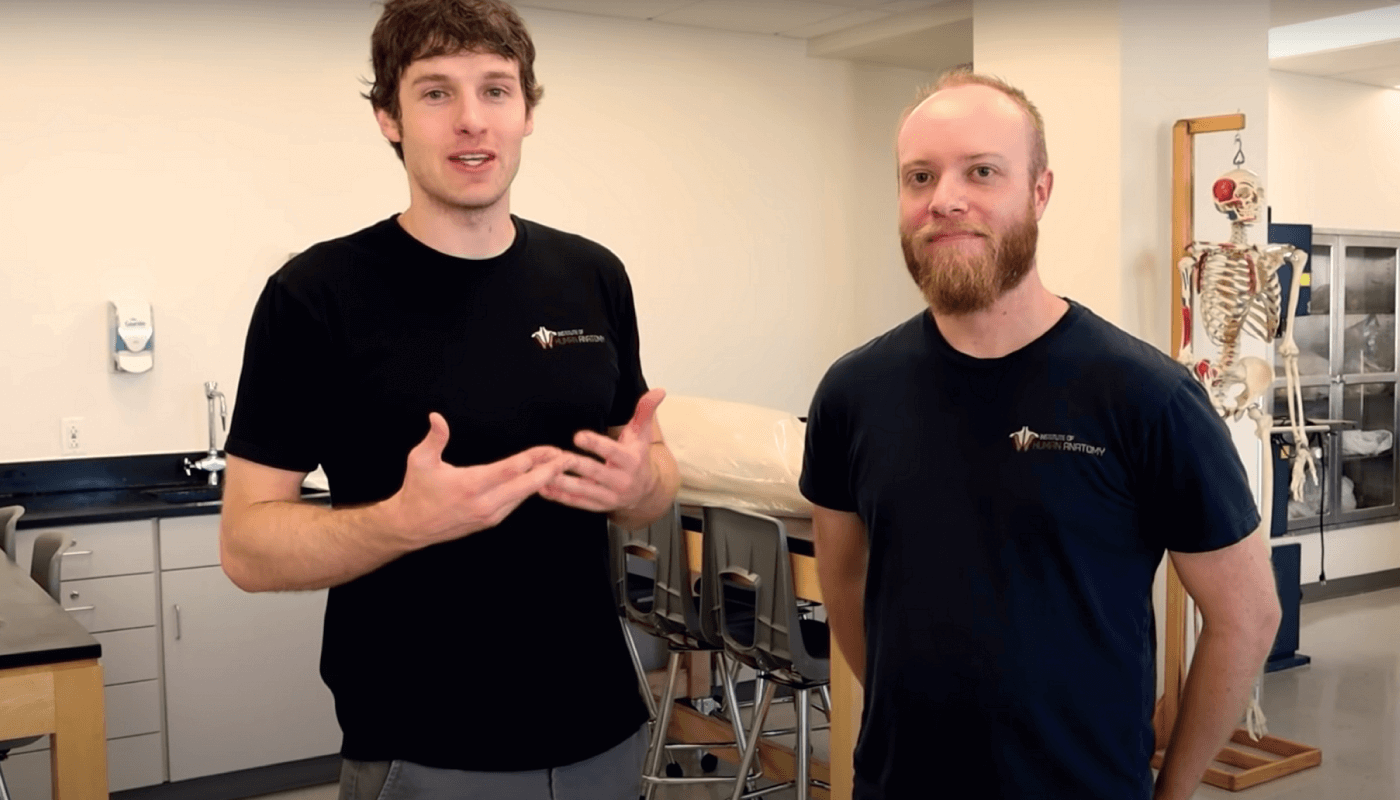
An interview with Jeremy Jones, Jonathan Bennion, and Justin Cottle
Pathologists and laboratory medicine professionals have seen massive success on Twitter, with the #PathTwitter community emerging as a hub of social interaction and support. But what about social media channels outside the Twittersphere – photo- and video-based platforms that offer other communication styles for the public and healthcare professionals alike? We spoke to Jeremy Jones, Jonathan Bennion, and Justin Cottle of the Institute of Human Anatomy, who have skyrocketed the lab to social media stardom. Here, they talk about the benefits of taking medical education to Instagram, TikTok, and YouTube – and offer their tips on starting successful channels for medical teaching.
Building the Business with Jeremy Jones
Can you give us a brief overview of the Institute of Human Anatomy?
Founded in 2012, the Institute of Human Anatomy is a unique facility specializing in the use of human cadavers as instruments for advanced anatomical education, medical device training, and prototype testing. We provide state-of-the-art education and experience for those engaged in or seeking a career that requires the study and understanding of human anatomy and physiology. Recently, we’ve taken a new approach to our mission of providing education to as many people as possible by distributing our content online.
What inspired you to establish the lab, particularly with a non-medical background?
My co-founding partner, Jonathan Bennion, identified the opportunity when a local massage therapy school where he was teaching anatomy lost its access to the university’s cadaver lab. The students were incredibly disappointed that it would no longer be a part of their curriculum and it showed us that many practitioners in health-related professions could really benefit from the type of education we can provide about the human body. Although I have no medical background, I am tremendously curious, fascinated by science, and an entrepreneurial opportunist. It was simply too good a fit not to explore!
What challenges did you encounter when setting up the lab – and taking it online?
None of the cities or counties knew what to tell us when we asked about the requirements to open the lab. No private commercial enterprise had ever sought to open a human cadaver lab before, so there was an additional layer of government and commercial code navigation that was certainly different from any other business in which I had been involved. Also, transporting the bodies is a little unusual, to say the least. We’re all so programmed to think of the deceased as being transported in either a hearse or an ambulance – it still feels a little awkward to use my pickup truck to bring our cadavers to the lab.
Though we didn’t start out with a specific social media strategy, we always planned to scale the business and use digital content to do so. However, we had concerns around the use of the cadavers and the respect for the donors and their families that made the process a little tricky. Even now, although social media has become a large part of what we do, we still need to develop and deliver our in-person workshops, training, and courses, and we take significant precautions regarding what we show and how we show it. We are currently working to leverage our social presence to expand into more e-commerce, art-related projects and, most importantly, develop additional specialized digital courses for those looking for more specific knowledge around certain health-related disciplines.
Jeremy’s Top Tips
Determine up front how social media will be leveraged. What platforms will you use, what content will get deployed on each, and for what ultimate purpose?
Research what each platform requires to provide the best value to your audience and to your enterprise. Develop content that fits these parameters.
Develop and keep a schedule/process and repurpose as much content as you can. Try to organize all content creation in the most efficient and beneficial manner possible.
Research and find the right technical equipment and software needed to do the job.
Engage with your audience as much as possible and don’t be afraid to try new ideas.
Analyze what does and doesn’t work and continually optimize your workflow using that data.
Enjoy the process and be authentic!
Social Media Success with Jonathan Bennion
What inspired you to take the Institute of Human Anatomy to social media?
It was always in the back of our minds to take the lab online, but there were ethical issues that we needed to consider first. We work hard to protect our donors and there’s a fine line between providing education and going for shock value, which has never been our goal. We decided on a few ground rules:
We weren’t going to show any identifying marks on bodies.
We were going to protect identities.
We were going to keep the organs safe and separated.
We planned out what we were okay with showing and what we wanted to restrict to in-person labs (or behind a firewall for online courses). We want to have fun in the lab – we don’t want to treat it like a funeral home – but we also take it seriously, because those who donated their bodies to science have given students a wonderful anatomical gift from which to learn.
Meanwhile, we registered placeholder accounts for Instagram and YouTube and, in November 2019, Justin messaged me and Jeremy to say he had been researching TikTok and asked whether he should get on it. He uploaded a short video of the brain and, an hour later, he came back and said, “I think this video is going what you might call ‘viral.’” It just kept growing and growing – so we started doing more and getting involved in other platforms.
Justin really jumped into TikTok and I jumped into Instagram. They’re two different animals with different demographics and, though we do keep gaining followers on our Instagram page, it didn’t blow up as fast as TikTok, which now has over 6.7 million followers. We also have a YouTube channel on which we recently hit over 2 million subscribers. The best stories we hear are when people say our videos inspired them to go to medical school or pursue a degree in anatomy.
Talk us through your process for creating videos…
From a content creation perspective, we’ve tried multiple different strategies – from running polls on Instagram (“Would you rather see this topic or that?”) to taking inspiration from user comments. We keep a list of requests and, if a lot of people want the same topics, we bump them up to the top.
Listening to the audience helps a lot, but there have also been times when I made a video just because I thought it would be cool and it ended up being really successful. For example, just before Thanksgiving, I made a video about how much food people can stuff into their stomachs at Thanksgiving dinner – and it’s our most popular video so far.
YouTube videos require by far the longest planning process. With Instagram, I just film a 30- to 60-second video, but YouTube requires us to dive into the nitty-gritty of anatomy and think about how we can make it fun. For Instagram, I remember what previous students have found interesting that could make a fun video – and I usually batch-film my Instagram videos and make my way through the list. The fun part of the process is identifying something that students might usually find boring and thinking of ways to make it interesting. I think that’s why Justin and I have seen success on both social media and face-to-face lectures; we take an anatomical structure or topic and ask, “So what?”
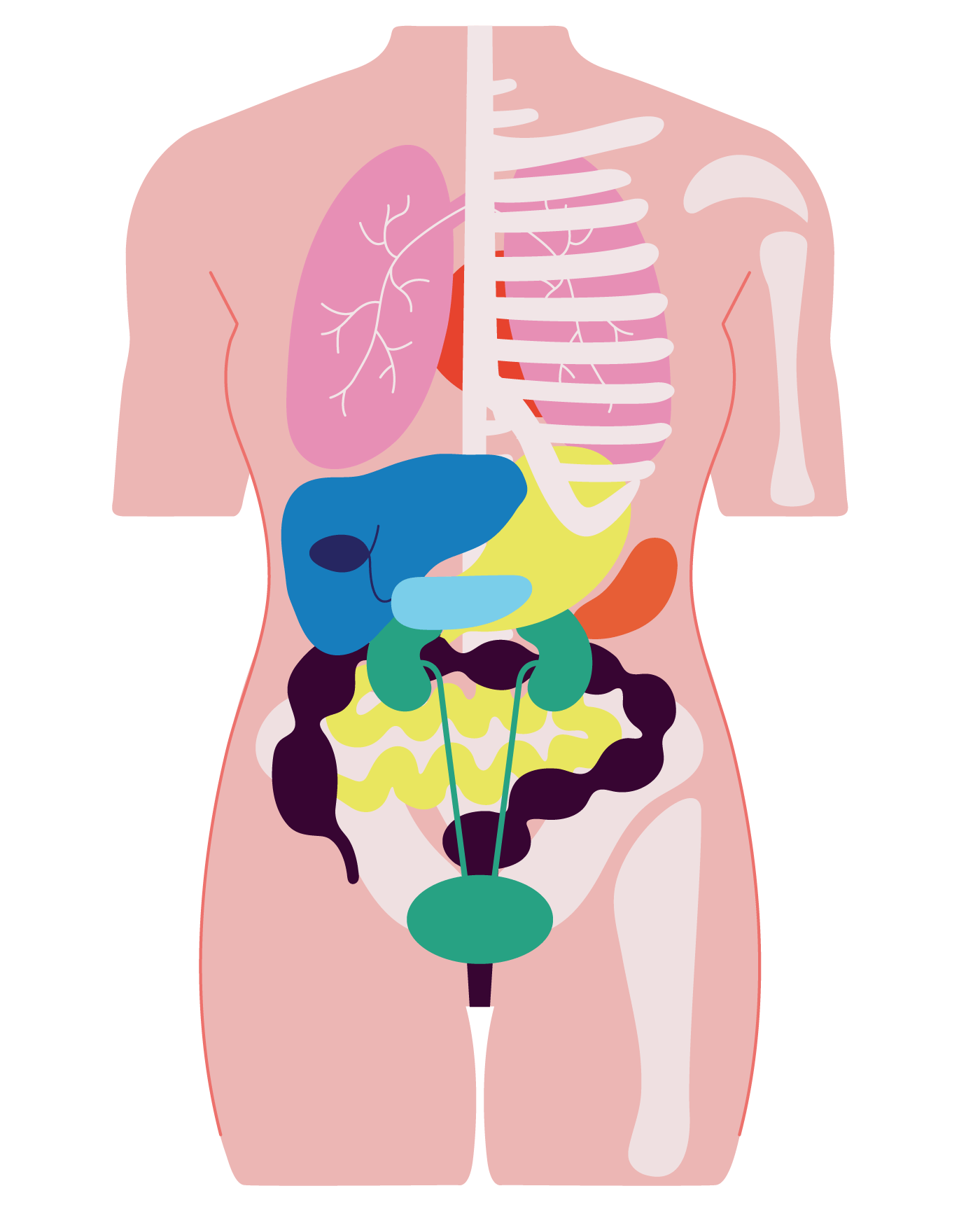
How do you decide whether to upload content as an Instagram story, post, or reel?
Instagram has so many options. It can be fun to experiment, but it is a guessing game because, with social media, there’s a level of control that you just don’t have and you have to step back and accept that. From a creative perspective, it can be frustrating when Instagram changes its algorithm to prioritize different types of content, so I try to do a little bit of everything. Sometimes I create reels; other times, if I can’t fit the content into 30 seconds (the maximum for a reel), I turn the content into posts (which can be 60 seconds long). I also need to start asking basic call-to-action questions at the end of my videos – something like, “What do you guys think? Let me know in the comments!” It really blows up the comments more than the videos in which I don’t invite audience participation.
I also post quizzes on Instagram stories, which followers have really seemed to love. All it takes is snapping a photo of a cadaver and asking what the structure is. We get messages every day about the quizzes, so they are definitely here to stay.
What are the key things to keep in mind when creating medical education content for Instagram and YouTube?
Logistically, we have to make sure we’re protecting the privacy of the cadavers and using them appropriately. Justin and I also feel that it’s a moral obligation to make sure what we’re saying is accurate. There’s a lot of stuff out there that people can make inaccurate claims about; anatomy isn’t too bad because it’s pretty much a point-and-shoot topic, but when we talk about things like supplementation and whether it works on the body, we have to be careful, because people are so interested in applying anatomy to the health and wellness of their bodies.
It’s also important to make it clear that, although we’re experts in anatomy because we’ve been doing this for so long, we still don’t know everything. It’s okay to say that we don’t know something but that we’ll find out for the audience – in my opinion, the best educators are the ones who don’t make something up on the spot because, if they’re wrong, they lose all credibility.
Furthermore, medical content can be dry, so you need a presenter who is engaged and enthusiastic. We have audience members from many different backgrounds and professions, so we have to think about how a video might change for massage therapists compared with pathologists or nurse practitioners or non-medical professionals. The factual part of the video doesn’t change, but the why does – why does that profession care about this content? We have to be quite general because our audience is so vast and we want to reach and engage everybody, no matter their background; however, if you’re targeting a particular audience, think about why that group cares about the topic.
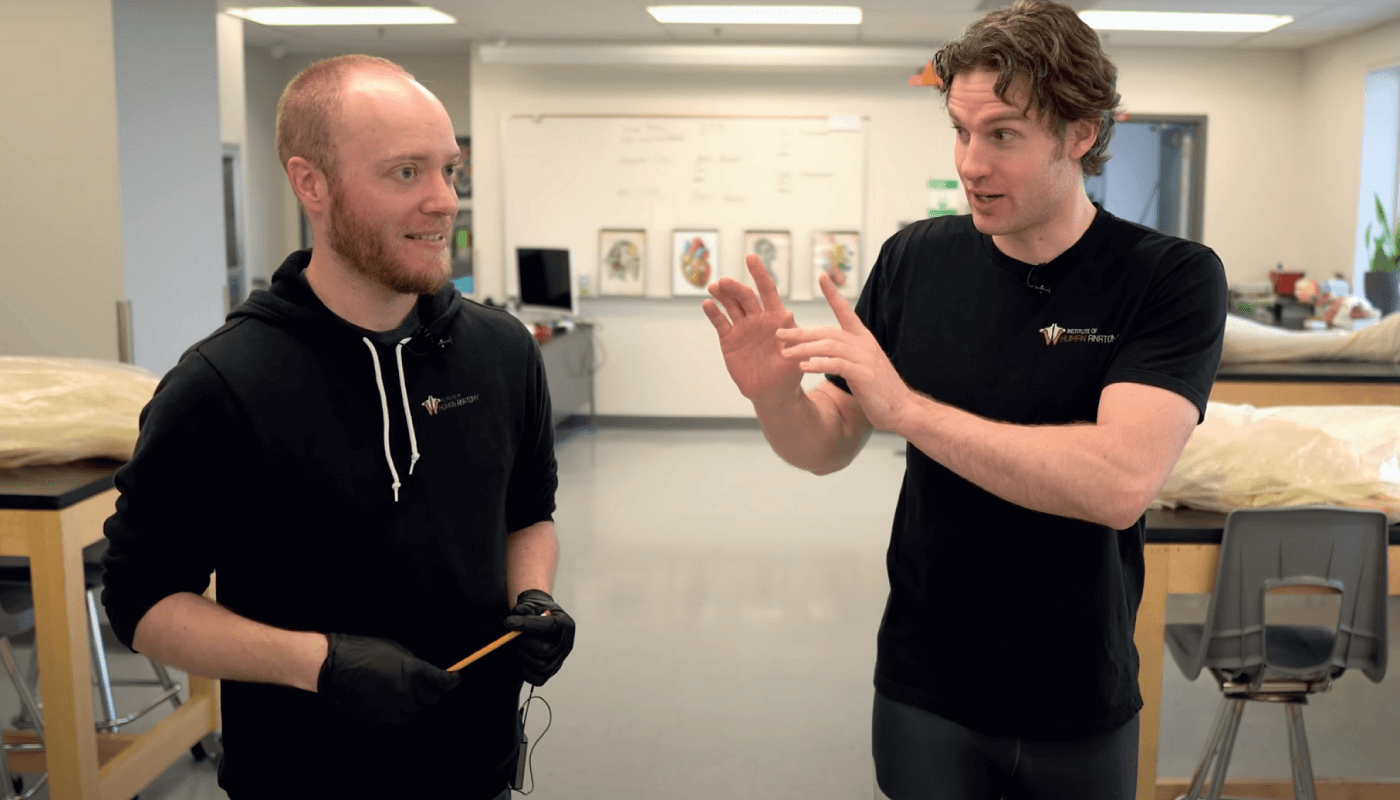
What about presenting to the audience – is there anything you have to think about?
First and foremost, you have to show the audience that you’re excited about what you’re teaching. If you’re not engaged, your audience won’t be either. In some videos, I’ll explicitly say, “This is why this is so cool.” Have a smile on your face, tell people why it’s important to their lives, and address the audience directly. For example, instead of saying, “This is the stomach,” say, “Did you know your stomach can hold this amount of food?” Make it personal.
For YouTube, the main thing to bear in mind is how to keep people’s attention. From an editing point of view, we change the angles as much as possible, even if it’s just a quick-cut zooming in or out. This keeps the audience engaged and stimulated. I talk with my hands a lot, too, and change the tone of my voice, especially if it’s a long “talking head” video.
We steer clear of clickbait. We could do it if we wanted to; we could create content for the sole purpose of shock and awe, but we want to stick to education. It’s important to us that we have catchy titles to pique people’s interest but, if they click on the video and it has nothing to do with the title, they’re going to lose trust in our channel and we’ll lose our credibility.
What challenges have you faced in creating online medical education content?
A particular problem we’ve encountered is having our YouTube demonetized. When you upload a video, their algorithm makes sure it’s appropriate. In one video, I popped an abscess; it was monetized initially but, two days later, they demonetized it. Some things are okay and some aren’t – but they don’t tell you why.
The other isn’t really a challenge, but I think every creator needs to prepare for it. You can have a perfect video or post and you will still get people who don’t like it or respond negatively to it. We don’t receive a lot of negative feedback, but there have been a couple of emails from people saying, “How dare you use human bodies to teach like this?” What they don’t see is that Justin and I are in the lab every day caring for the bodies – we’re like stewards for them, making sure all the tissues are separate from one body to another so they go back into the same body, back to the donor program, and cremated to either be returned to the family or taken to the local cemetery, depending on the wishes of the person when they were alive.
How do you expect people to learn about the human body? This is how medical education happens and it’s why these people donated their bodies. In 2021, medical education is both the same and different to the past – the basic principles of learning are still there, but having the opportunity to deliver it both in person and online is the best of both worlds. There’s no true replacement for learning in person (despite some really cool 3D apps), because your real patients aren’t going to be virtual, but there is still tremendous value in online learning – especially because cadaver labs are decreasing in number and students are finding them more difficult to access.
What’s next for the IoHA’s video content strategy?
Increasing the volume of content we produce would be nice, up to two or three YouTube videos per week. Our efficiency keeps increasing and the only way to get better is to just do it, learn from your mistakes, identify what’s not efficient in your workflow, and tweak it.
People want to make a living as content creators, but we struggle with how much effort and resource we can put into answering hundreds of questions “for free” and still get our other work done. The more followers you get, the harder it becomes to answer them all, so we’ve thought about doing “talking head” Q&A videos on YouTube to hit two birds with one stone – the audience gets free content and, as a channel creator, you can monetize it.
Jonathan’s Top Tips
Stick with the grind and be consistent
Be flexible with the ups and downs; one month, you could do really well and have a video go viral, but the next month could be slow.
For medical professionals who are trying to teach, you have to tell your audience why your subject matter is important to them.
TikTok 101 with Justin Cottle
What inspired you to take the lab to TikTok?
Jonathan, Jeremy, and I have been talking about creating online content since 2013; the problem was that we were all too busy. In March 2019, the massage school I was working at went under and I was left with a lot of spare time, so I thought I should start thinking about how to bring the lab online. I started taking online digital marketing courses for Facebook, Instagram, and Twitter, and then I heard of this thing called “TikTok.” I downloaded it and saw that it was nothing but dancing teenagers, so I didn’t know whether it was going to be the best fit for us, but I kept it on my radar while focusing on YouTube.
By August 2019, I had become obsessed with it and its young user base because it presented the perfect opportunity to inspire them early. TikTok is a very difficult company to reach, but I eventually contacted its parent company’s PR team with a video explaining what I wanted to do on the platform. Originally, I wanted to check whether it would be okay if I showed cadavers on the platform – I didn’t want people to be scrolling through like: dance video, dance video, food video, human heart, dance video. So we developed the idea, went through best practices, and got full approval from the team. After that, it took a few months for me to figure out how to do it right – I needed to have a hook to get the attention of younger individuals while they were scrolling.
In my very first video, I decided to focus on the brain, because it doesn’t fully mature until you’re 25. I thought, “If my target audience is under 25, I’m going to call them out.” I also made sure my language was clear and let them know it was a real human brain. After publishing it, I put down my phone to make dinner. When I came back after an hour, the video had 50,000 views! By the next morning, it was over 1,000,000 views. It was immediately rewarding to see that because I had spent so long planning it. I decided very early on that I was going to show people something that is extraordinarily simple, but that they’ve never seen before.
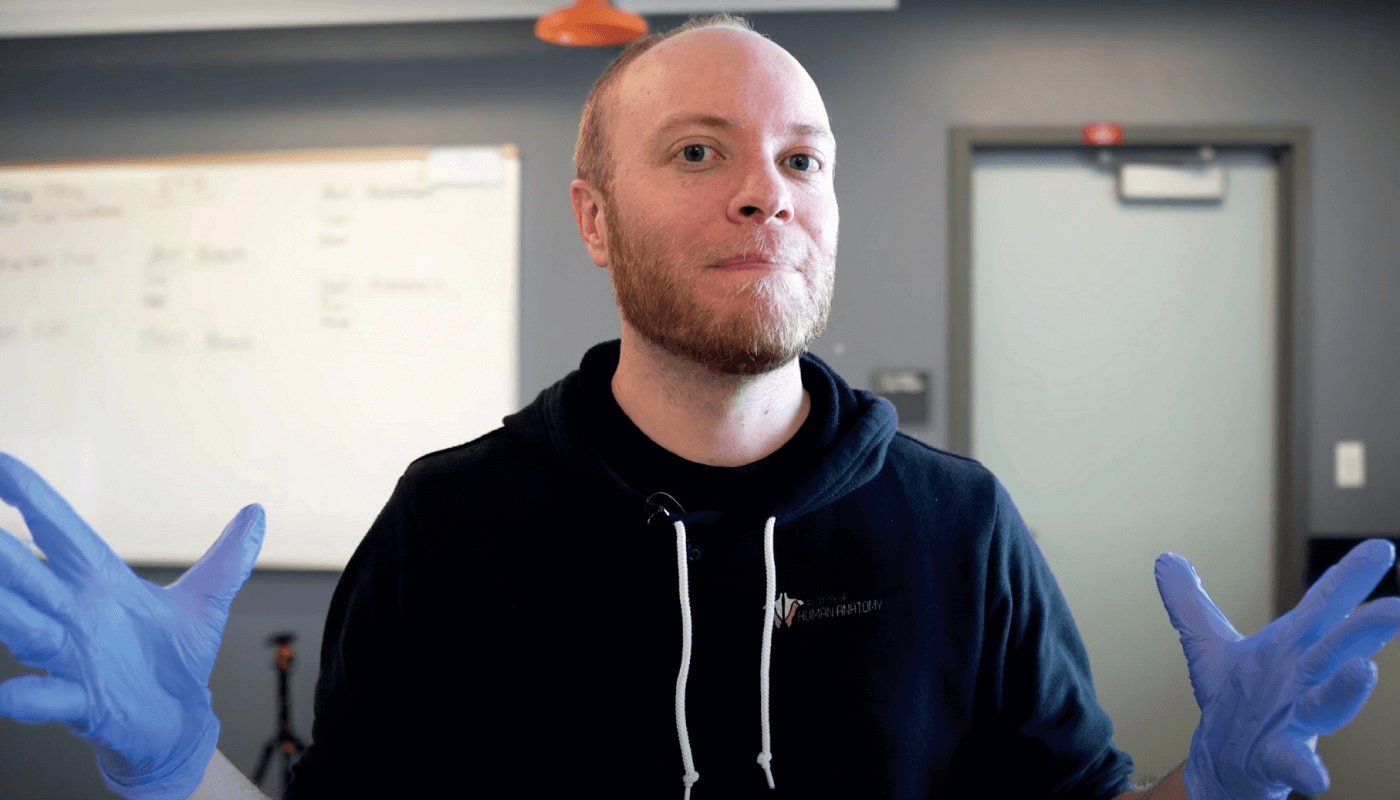
Talk us through your content creation process…
At first, I wrote down every anatomical single structure that came to mind and asked myself, “Can I create a video around that?” For the first four months, I worked my way through the list, but then I had the idea of making our TikTok account into an atlas of the body. From there, I started making videos that could build a body from the ground up. The idea was that people could come to the page and get a good idea of how the body works and how tissues interact with each other. However, TikTok doesn’t show videos in a sequential format, so it didn’t work as well as I had hoped.
Once I began engaging with the comments and seeing what people were interested in, it really started to take off – and I realized that video selection should be based on audience comments, rather than on what I wanted to do. For example, if I talk about the detailed science of anatomy, I can guarantee only about five percent of users will be interested or even understand, so I’ve moved to far simpler videos based on user interests. I spend around an hour every day reading everyone’s comments.
I also have to consider teaching in a lab versus on camera – can I replicate what I do on camera? Will users see it properly? In the initial stages, I had no idea what I was doing in terms of editing or lighting – I was doing it all on an iPhone 6. I’m much more comfortable now, because I edit all our YouTube videos, but I still practice and try out different angles on the cadaver to see what works before we hit “record.” Now, I film everything in 4K, edit in Adobe software, and make sure everything is as inclusive as possible for people with disabilities.
How do you adapt your content for different platforms?
The hardest part is creating engaging content that fits a specific platform. From our analytics, I’ve found that 20- to 23-second videos perform best, which I think is because of the modern attention span. I try my best to keep videos within that timeframe and ask myself what I can realistically say in 20 seconds – that’s hard, because I have to figure out how to convey value in such a short time. The idea with TikTok is that I’m providing quick, digestible chunks of information that, if users really like, they will binge from our profile. If they don’t do that, then at least they’ve learned one new thing.
On YouTube, I try to replicate what I do when I’m teaching my students – whether that’s in the classroom or in the lab. YouTube is our most variable platform; one of our most successful videos is two minutes long, but I recently posted a 28-minute-long video that is performing extremely well. The content needs to be fleshed out more than on other platforms because we can dive deeper into concepts – and then I can take quick snippets and post them on TikTok or create promo videos.

What goes into making a successful video for TikTok versus YouTube?
TikTok can be hit or miss; however, I’ve found that the overarching theme for success is to hook viewers and show something visually and auditorily stunning within the first two seconds. It’s that short, which is why it’s so difficult. On that note, even if they only watch five seconds of your video, you should think of it in terms of “watch time” percentage. For example, I aim for a 50 percent watch time – so, in a 22-second video, I need to have a great first 11 seconds and hope that makes viewers stay for the full show.
When creating medical content on TikTok, try to have a “fact of the day” mentality; if you can teach just one interesting thing, you will see success. But that’s not all – now that more people are doing it, you need to get creative, especially if you’re trying to teach them nitty-gritty details. YouTube is very similar because, when you look at your analytics, you see that it’s all about watch time. If I want a YouTube video to perform well, it has to have a good thumbnail and a good title, which influences clickthrough rate. The holy grail of watch time on YouTube is around 40 percent of the video, so that’s what I aim for.
After that, my main goal is to teach people something. The most valuable, intensive content is usually towards the end of the video because, if viewers have made it that far, they’re in it to win it. Most of those people aren’t going to watch 70 percent of my video and then bail – they’re going to watch the whole thing. It’s hard though; personally, I’ve never experienced anything more difficult than trying to be creative and engaging while also conveying value. But it’s amazing to see that it’s actually paying off.
What are the educational benefits of short-form video for medical teaching?
Anatomy is boring – and I say that as someone who loves anatomy. The human body itself is amazing, but anatomy is actually boring; it’s just structures connecting to other structures. What people like is physiology – that’s where things get exciting, because you’re showing them how it works. In that regard, you have to teach people something that’s exciting to deliver – attention spans are getting shorter and the way people consume content has changed. We want to teach viewers something quick and interesting about the body because that’s how our brains work. But everyone is interested in their bodies – there’s a reason why medical shows are so popular – and if you’re able to latch onto that (even for 15 seconds), there’s enormous power in it.
How did you overcome the “dancing videos” stereotype when you first started out on TikTok?
Honestly? I just didn’t care. I haven’t actively tried to break stereotypes – I just try to be me and teach people. It sounds cliché, but I want to change the world with teaching, because it bugs me that people know more about cars and computers than about their own bodies.
Authenticity is part of the winning formula. As long as you have a story to share or something of value to teach, people will be attracted to it. Many users are already getting sick of the generic content and are saying how much they love “anatomy TikTok!” The bingeability of the platform is incredible. Users can easily spend 20 minutes continuously scrolling and, though there is a lot of competition, they will still see your content and the growth is more organic than on platforms like YouTube. Then again, “success” is different for everyone – you need to dial down your expectations and think about the impact you’re making on those who do see your content instead. If you have that mindset, you’re more likely to be successful. In the end, I believe it boils down to:
Discipline
Perseverance
Doing what you know
Looking at your analytics
Reading and engaging with comments
Bringing value to users
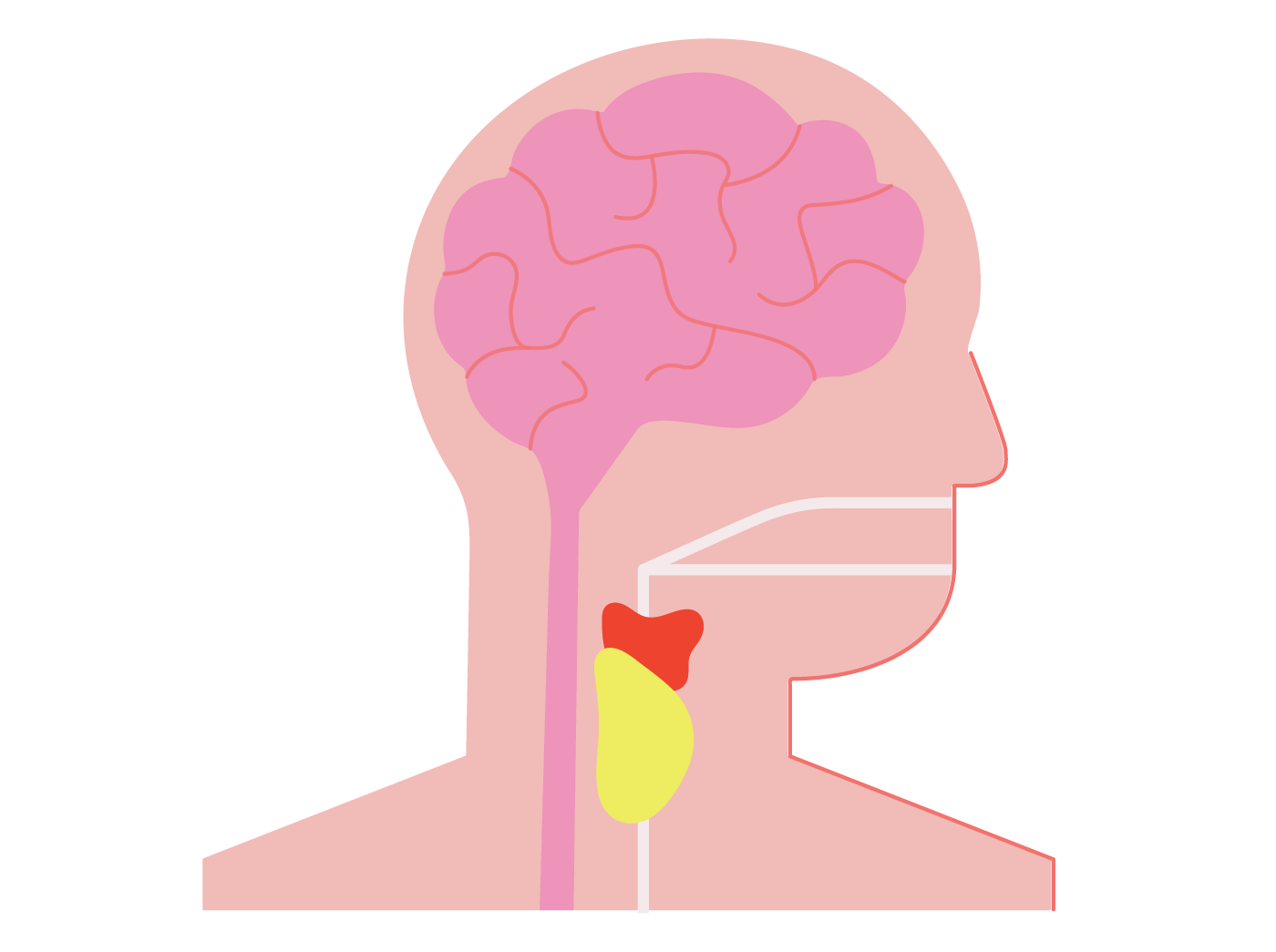
What else do you keep in mind when creating medical education videos for social media?
I try to make topics relevant to viewers in some way. For other specialties, I know that’s not always possible, especially if you’re talking about certain conditions or procedures – but, in that case, it needs to be something that people will find interesting or that you can make interesting. We all know that someone who speaks passionately about even the most boring subject will hook you. But it takes practice to speak (well) to the camera so, if you’re just starting out, choose topics you’re pretty sure people are going to be interested in until you build enough of an audience that you can start experimenting with other topics. Don’t go too nuanced in the beginning – people won’t know you, so they won’t trust you. Instead, they want something of value that’s relatable and outright interesting. That’s what I would focus on in the beginning – keep it simple and slowly build to the more obscure topics.
Once you get into the detailed side, make sure you’re doing Google keyword analysis – looking up the density of keywords and what people are searching. There’s a YouTube plugin that can analyze keyword frequency and, if people are searching for it on YouTube, I guarantee that they’ll be interested in it on TikTok, too.
On that note, you also have to be okay with the fact that people aren’t going to watch your entire video. The people who make it to the end, no matter how short or long it is, are your diehards. Those are the people who would go down with you on the ship. But it’s probably only a handful of people – the rest of them switched off a long time ago. Be okay with that.
Are there any other unique challenges to making content for YouTube?
You have to be careful with what you’re saying and showing on YouTube, and the biggest challenge is that it gives no feedback about what the exact problem is. One infuriating issue is that educators teaching medical content have to use medical terminology, which can be a barrier to entry for creators.
Sometimes you have to play the game. I’ve uploaded a video sometimes 10 or 15 times just to figure out what they want. Anyone who wants to do really cool, unique content needs to be aware that, if you say or show the wrong thing in a 30-minute video, you may not be able to get it published and it can wreak havoc on your algorithm.
Once, I was able to get some feedback from YouTube. We uploaded a video in which Jonathan cut into an abscess and it got flagged, so we gave them examples of much worse videos approved by their algorithm. They finally got back to me and said it was the blood (though it was only a small amount). It made me aware that blood, even the smallest amount, is not okay on YouTube. So, as a pathologist, how do you get around that?
There’s so much more we want to show that YouTube won’t allow. For example, they won’t allow us to put a scalpel to the tissue. I get where they’re coming from, but there’s no case-by-case basis. Other creators have reached out to us and asked how we’re monetized, and I look at their channel and see they’re taking a scalpel right to the tissues! That’s why they’re not monetized, and it’s a serious challenge. YouTube is fine with any piece of surgical equipment as long as you’re not cutting or showing blood.
What’s next for IoHA’s content strategy?
The problem is that we have too many ideas. Our grand goal is still the website atlas – we want to create an engaging, searchable database with cool cadaver videos. In terms of our social channels, our main focus right now is YouTube because we’re hitting our stride with it and really starting to figure it out. TikTok is always going to be important, but it’s getting a little harder to find the absurd levels of creativity required to stand out.
I want to do more neuro topics and structures because I want to start getting into thornier subject matter. I’d like to start talking about mental health; that’s where I believe value can be put out there. You have to carefully consider how you’re going to talk about delicate subjects, but they’re so much more valuable to viewers than simple videos (“Look! It’s a kidney”). We have to at least try to generate more intensive conversations – and, if people don’t like it, we can always go back to our roots!
Justin’s Top Tips
Spend time on TikTok. You can start extracting information as to what makes TikTok videos interesting and successful. I always look at the “share” icon – how many times was that video shared? That’s a better indicator of a video’s success than likes or views, because it shows that people are enjoying the video and want other people to see it, too. TikTok is the perfect social platform to teach people, as long as you have something interesting to say quickly. And the fact is that kids love it. It’s amazing how integrated social media has become – it’s a fantastic method to teach and bring value, and TikTok is no different.
Be strategic. Know what you want to talk about and try to find a niche. Don’t lock yourself into a corner where the only thing you can talk about is a small part of your field – have a wider plan of the topics you want to talk about. At the same time, don’t try to do everything under the sun. If it’s medical, you could start off with describing certain conditions or surgical techniques, then maybe show them a day in the life of a pathologist. People love that type of content, especially on TikTok. Micro-vlogs (showing people what you get up to during a day in your life) are always successful on social media. Laboratory medicine (or anything medical) is unique and relates to that “Grey’s Anatomy” type of attachment.
Practice with the camera. It doesn’t matter if you place a teddy bear in front of the camera to practice with – just make eye contact with the bear and never leave. I know from teaching my students that it is one of the most valuable things you can do. Learn how to speak to a camera and not look away – no matter what else is happening, you have to lock onto the lens. I think that really helps the viewer to feel connected to you, especially if you’re doing “talking head” content.
Practice public speaking. If your face isn’t in the shot, you need to practice speaking well to keep viewers engaged and listening. Make sure your voice isn’t monotonous – go up and down and have proper inflection.
Passion can get you a long way, but it’s these little things that set good creators apart. After that, just make sure you bring value to every single video – if you’re there for education, then educate.
Jeremy Jones is Co-Founder and Executive Director at the Institute of Human Anatomy, Salt Lake City, Utah, USA.
Jonathan Bennion is Co-Founder, Director of Education, Lead Dissector, Anatomist, and MPA-C at the Institute of Human Anatomy, Salt Lake City, Utah, USA.
Justin Cottle is Marketing Director, Dissector, and Instructor at the Institute of Human Anatomy, Salt Lake City, Utah, USA.




